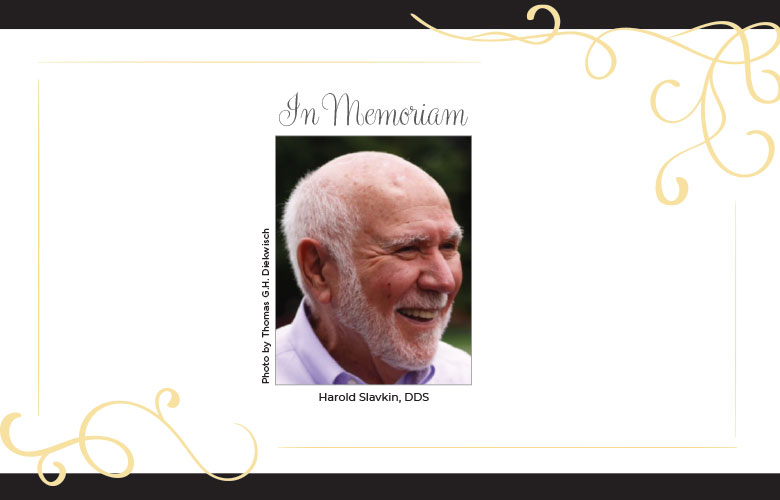A Tribute to Harold C. Slavkin, D.D.S.

A Tribute to Harold C. Slavkin, D.D.S.
Harold C. Slavkin, D.D.S., a founding member of the Santa Fe Group, was an internationally renowned dentist, scientist, educator, and science administrator and a fierce advocate for social justice. Throughout his career, he nurtured multidisciplinary and “transprofessional” collaborations and stimulated multisector alliances to eliminate health and health care disparities.
A lifelong learner and educator, Hal loved teaching and mentoring others. The University of Southern California was Hal’s academic home. It was there he studied English and dentistry, became a faculty member, served as Dean at the Herman Ostrow School of Dentistry (2000-2008), and founded and led the Center for Craniofacial Molecular Biology. The Center and his team focused their studies on understanding and preventing craniofacial birth defects and used the Center as a platform to provide science education to high school students, work with communities locally and beyond, and communicate the wonders of science to both the public and policy makers.
Hal loved exploring new ways of knowing and delighted in sharing new findings with others. Science and research were Hal’s passions, and his tenure as the sixth Director of the National Institute of Dental Research, National Institutes of Health (1995-2000) was transformational. During his leadership, the Institute’s name was changed—to better communicate the broad scope of necessary research that was underway—to the National Institute of Dental and Craniofacial Research. A new plan, Shaping the Future, was issued, and its development process and title aptly reflected Hal’s philosophy. Numerous collaborative research initiatives with other institutes were launched; broad input was solicited from patient advocates, science editors, health care professionals, and other federal agencies; a strategic plan to eliminate racial and ethnic oral health disparities was released; and a website dedicated to emerging craniofacial genes was launched. He also provided a home for the development of the first Surgeon General’s Report on Oral Health in America, welcoming broad collaborative advice and scientific contributions from multiple federal agencies and departments, dental specialties and associations, research disciplines, and public health.
Hal believed in the human spirit and its ability to do good for society. He wrote in the introduction of his 2012 book, The Birth of a Discipline, that his book was also “a parallel story, a compelling adventure, of how men and women of extraordinary talents and strong personalities collaborated and created the intersection joining diverse disciplines—stimulating creativity, fusion, and unanticipated outcomes from the convergence of interests.” Hal believed in the power of collective action. As a founding member of SFG, he delighted in convening individuals from different sectors and backgrounds to collectively create new pathways and approaches to promote health and well-being, including oral health, for all.
While Hal played an instrumental role in all SFG’s activities, the USC 2006 conference that he led best exemplifies his approach. With a primary focus on the oral health of children and homeless individuals, the meeting incorporated visits to local community programs. Attendees had on-site discussions with preschool teachers, volunteer clinicians, program administrators, and participating individuals and families. The process of seeing the program settings and listening to and learning from community leaders and participants led to enlightened reflections and action recommendations. The visibility created by this conference catalyzed local investments and support for the LA County community.
Hal had the gift of the spoken and written word, excelling in communication of all forms. Woven throughout his exceptional scientific and scholarly works are historical references, vignettes of literature, political and social milestones, and ever-present calls for social justice and health policy action. We are fortunate that he has left us with a wealth of articles, books, and presentations from which to cull his wisdom and continue his legacy.
We are grateful to have benefited from Hal’s friendship, vision, leadership, and always positive spirit. We thank his wife of 43 years, Lois Slavkin, and his children, grandchildren, and great-grandchildren for sharing him with us.
*****
Improving the human condition with respect to oral, dental, and craniofacial diseases and disorders requires multifaceted strategies and multidisciplinary or transprofessional cooperation, not professional isolationism.
Harold C. Slavkin, The Birth of a Discipline

